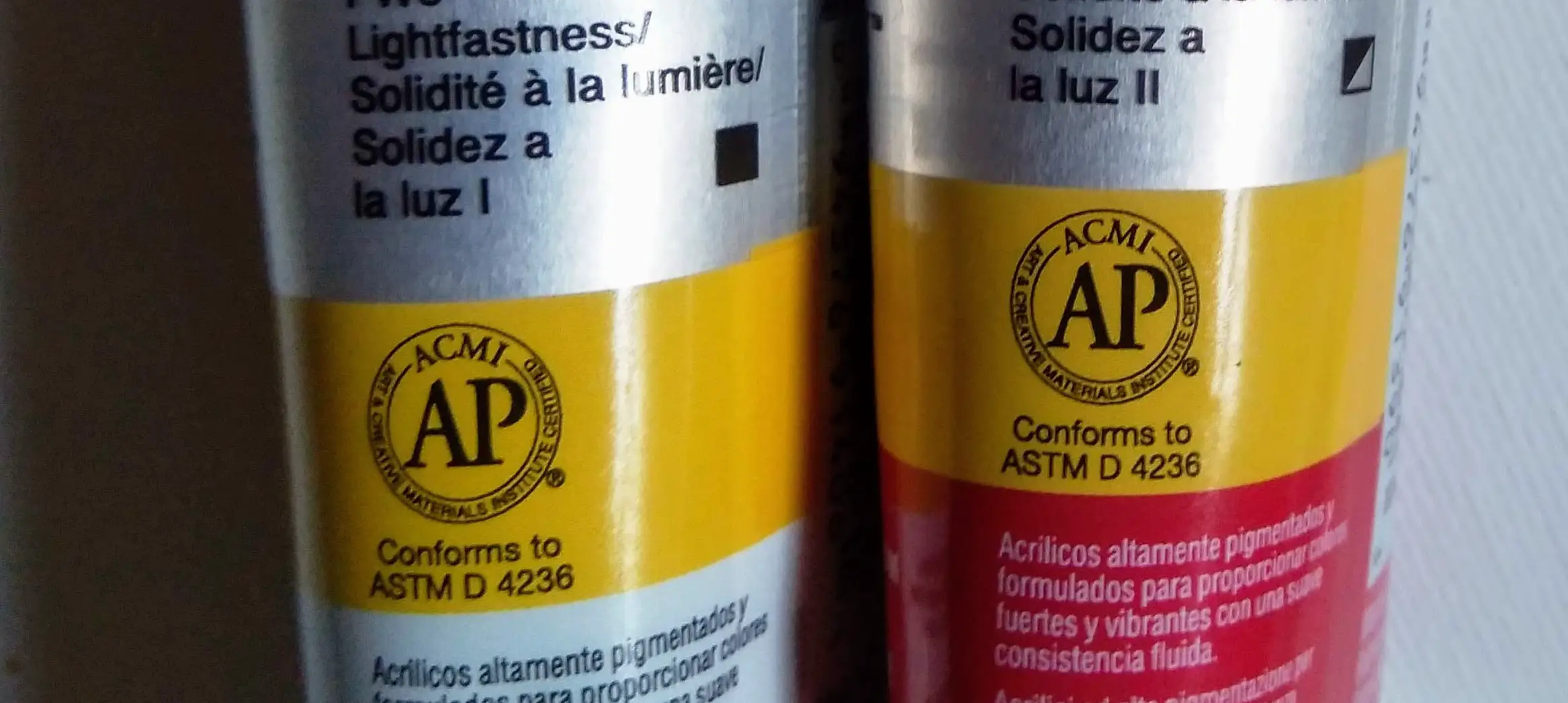Acrylic paints are generally considered nontoxic. But you might have seen acrylic paint contains some metals like cadmium which are carcinogens. So do these carcinogens in acrylic paint increase our risk of getting cancer?
Acrylic paints are nontoxic and do not cause cancer or other toxic effects in proper artistic use. Acrylic paint has cadmium, nickel, lead, chromium, carbon black, and crystalline silica that are known to cause cancer, but they are not harmful unless we ingest acrylic paint.
Any chemical can be harmful at some point without proper use. Using acrylic paint for general artistic purposes does no harm. However, we must take proper measures to minimize exposure to chemicals like acrylic paint.
Can acrylic paint cause cancer?
Acrylic paint can cause cancer if you inhale or ingest it. Some even cause skin irritation when contacted with the skin. Therefore use acrylic paint for artistic purposes with zero or very minimal exposure to your body. Even when you get some acrylic paint on the skin makes sure to clean it thoroughly after a painting session.
Usually, the metals that cause cancer and those that can be found in acrylic paints are as follows; cadmium, nickel, carbon black, lead, chromium, and crystalline silica compounds. When selling paint that has these chemicals in the state of California a warning message should be displayed on the paint label.
These carcinogenic compounds can increase the risk of cancer. They can alter the normal cellular activities of our body, damage DNA, and induce the formation of tumors causing cancer.
I have written a whole article about, ‘Is acrylic paint harmful? (In different routes of exposure)‘ There you will find the extent of harmfulness in different routes of exposure to acrylic paint. You can become a successful, informed artist with no adverse effects from using a chemical to create beautiful art.
Below let’s go through each of these carcinogenic metals in acrylic paint.
Cadmium in artist’s paint
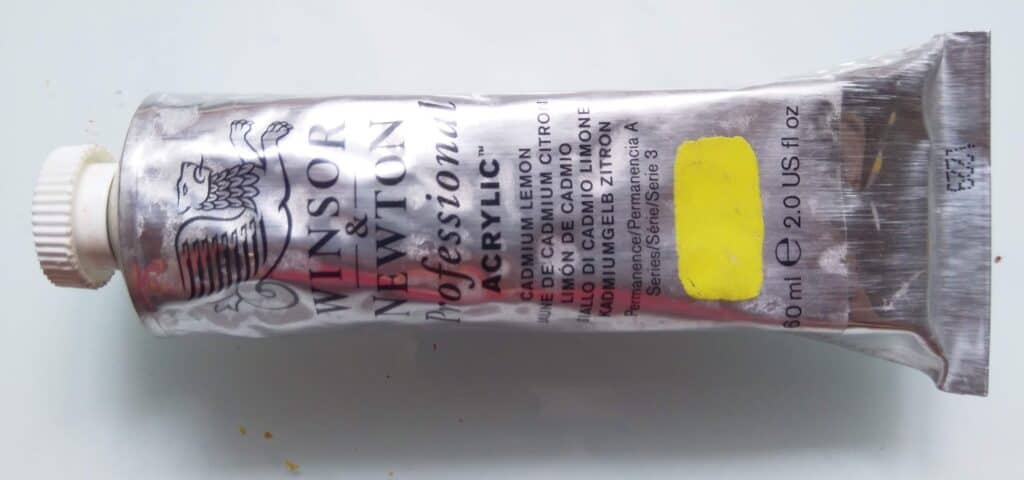
Cadmium is a common element in artist pigments. Cadmium colors are usually opaque and essential colors for most artists. Some colors containing cadmium are reds, yellows, and oranges.
Cadmium is a type I carcinogen (Source), which means it is known to cause cancer in humans. It causes a risk of cancer when inhaled more than 0.05 µg/day. Therefore cadmium containing paint should not be used for spraying, airbrushing, or scuffing the dry paint due to the risk of inhalation.
Ingestion of cadmium pigments should also be avoided. Cadmiums are also known in the state of Califonia to cause developmental and male reproductive toxicity.
You will see warning messages on cadmium-containing acrylic paint tubes. These warning messages are displayed as per the requirement of the state of California.
Nickel in artist paints
Nickel is a well-known carcinogen (source). It is known to cause lung and nasal cancer. Nickel compounds are listed as cancer-causing agents in Califonia proposition 65. Nickel is used in colors like Nickel Azo Yellow and Nickel Titanate in acrylic and oil colors. It is also a common compound in metallic colors. Contacting with nickel has other side effects like allergy, lung fibrosis, and cardiovascular and kidney diseases (source).
Carbon black paint
You will find carbon black paint in acrylic as well as oil colors. Carbon black is produced by charring materials such as wood or bone. However airborne unbound carbon black particles of respirable size compose risk of cancer. Therefore precautions should be taken to avoid inhalation or ingestion of carbon black particles.
Avoid spray painting or airbrushing carbon black. Also scuffing dry acrylic paint with carbon black will impose a cancer risk due to airborne carbon black particles.
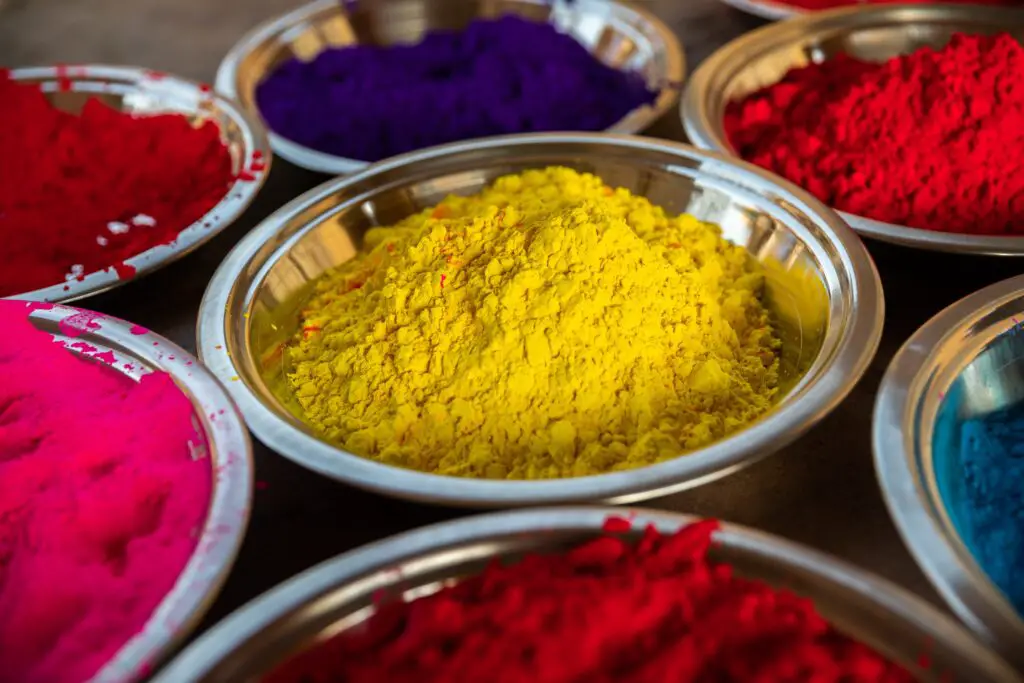
Lead in artist paint
Lead is considered a cancer-causing as well as developmental toxicity, male reproductive toxicity, and female reproductive toxicity-causing element. A safe level of lead with no significant risk for cancer would be 15 µg/day orally. However, the maximum dose to avoid reproductive toxicity would be 0.5 µg/day of lead.
Lead white paint is used mostly in oil paint in the past. But today lead white is replaced by zinc and titanium white which is far less toxic than lead. Other common lead-based colors are chrome yellow and red lead. However, these harmful lead-based colors are replaced by safer alternatives today.
Crystalline silica in paint
Crystalline silica is a mineral found in the earth’s crust on materials like stone and sand. Crystalline silica can be found in latex paint. It is causative of cancer and a disease called silicosis. Silicosis is a fibrotic lung disease caused by the inhalation of free silica particles. Crystalline silica exposure is also high among occupational workers. Thus it is known as an occupational carcinogen.
Other pigments of cancer or health risk
Some other acrylic colors use potentially harmful compounds. Some of them are cobalt oxides, chromium oxides, and manganese. Of these compounds chromium(VI) is classified as a human carcinogen (source).
Note: Toxic chemicals that can cause cancer or other toxicities can be present in any artist’s paint. Also, it is important to note that, there can be harmful chemicals but the toxic effects are yet to discover. The best way is to minimize the exposure to acrylic paint with your body as with any other chemical product.
Risk assessment of art materials
Paint including acrylic paint is evaluated for toxicities. Then warnings for potential acute or chronic health hazards are indicated on the label. These toxicological evaluations are done according to the ASTM D 4236 guidelines. So if there are no potential health hazards in the paint it will be labeled as ‘conforms to ASTM D 4236’.
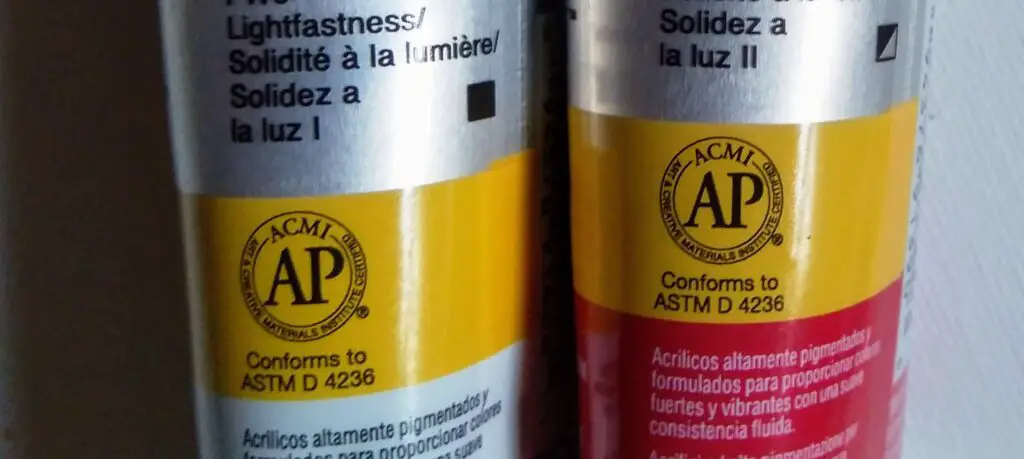
However, generalizing the results of these toxicological assessments for every user is questionable. Also, these toxicological tests use averages and assumptions for frequency and duration of use for the artist’s material which can differ individually.
Also, there can be health hazards in paint that are not currently known. So labeling a paint completely as nontoxic is questionable. So acrylic paint manufacturers like Golden include the term ‘conforms to ASTM D 4236’ along with a message to inform and protect consumers from any ill effects of art materials to the artist.
The message on Golden Paints is as follows; “Always protect yourself against known and potentially unknown chronic hazards of this and other chemical products by keeping them out of your body. Do this by avoiding ingestion, excessive skin contact, and inhalation of spraying mists, sanding dust, and concentrated vapors”
Labeling requirements for the state of Califonia
The state of California has special labeling requirements for products that have chemicals known to cause cancer and/or reproductive toxicity. If a product that has these harmful chemicals are sold inside the state of California, it is required to have warnings of the potential ill effects of those chemicals.
These harmful chemicals are cadmium, nickel, carbon black, lead chromium, and crystalline silica. Golden paints have warnings on the label if any of these chemicals are included in the paint even if in insignificant quantities (2.5 parts per million cadmium and/or 10 parts per million lead).
Following is the warning displayed in Golden Paints when there are harmful chemicals known in the state of California; “This product contains a chemical known to the State of California to cause cancer”.
Finding the health and safety data of artists’ paint
If you are a paint tube label reader you might have seen that some acrylic colors have warning signs there. Many manufacturers use Art and Creative Materials Institute (ACMI) AP (Approved)-nontoxic and CL (Cautionary Label) seals on the label to show the health and safety data. But Manufactures like Golden Paints use their symbol system for this.
Usually, on acrylic paint tubes, you will see that the paint says nontoxic. Even though it said so it doesn’t mean that particular acrylic paint is nontoxic to use on skin as face paint, body paint, fingers, nails, etc. Because of this miss understanding among consumers, Golden Paints does not use the ‘AP nontoxic’ symbol in their paints.
I have written a whole article about ‘Using Acrylic Paint on Skin: Composition and Safety Issues‘. You can find the detrimental compounds that can be in acrylic paints and the effect of skin exposure to acrylic paint there.
You can also find a list of hazardous compounds in the Material Safety Data Sheets (MSDS). These can be found on the product page on the web.
Also, you can see an ‘X’ symbol on the orange background which is the European symbol for harmful products. You will see this ‘X’ on cadmium colors, to prevent them from spray painting. This is done according to ASTM D 4236 Federal Guidelines.
How to minimize the cancer risk with acrylic paint?
Like any chemical acrylic paint should not be inhaled or ingested. Avoid giving acrylic paint to your small children (less than 6 years) as they may accidentally ingest the paint. Also, avoid airbrushing, spray painting, concentrated vapor, or sanding dry paint that has harmful chemicals like cadmium.
Avoid excessive skin contact with acrylic paint. Try to wash out any paint you got on your skin thoroughly after a painting session. I have written a whole article about ‘Can you put acrylic paint on your face?‘. You will find out why it is not safe, as well as the best paint to use on your face.
However, make sure that you do not use acrylic paint on functional pieces like dishware. These can increase your exposure to harmful chemicals.
Manufacturers also produce cadmium-free versions of acrylic paints. These cadmium-free versions have almost the same qualities as cadmium versions of acrylic paint. You can switch to those safe alternatives and minimize exposure to chemicals as well.
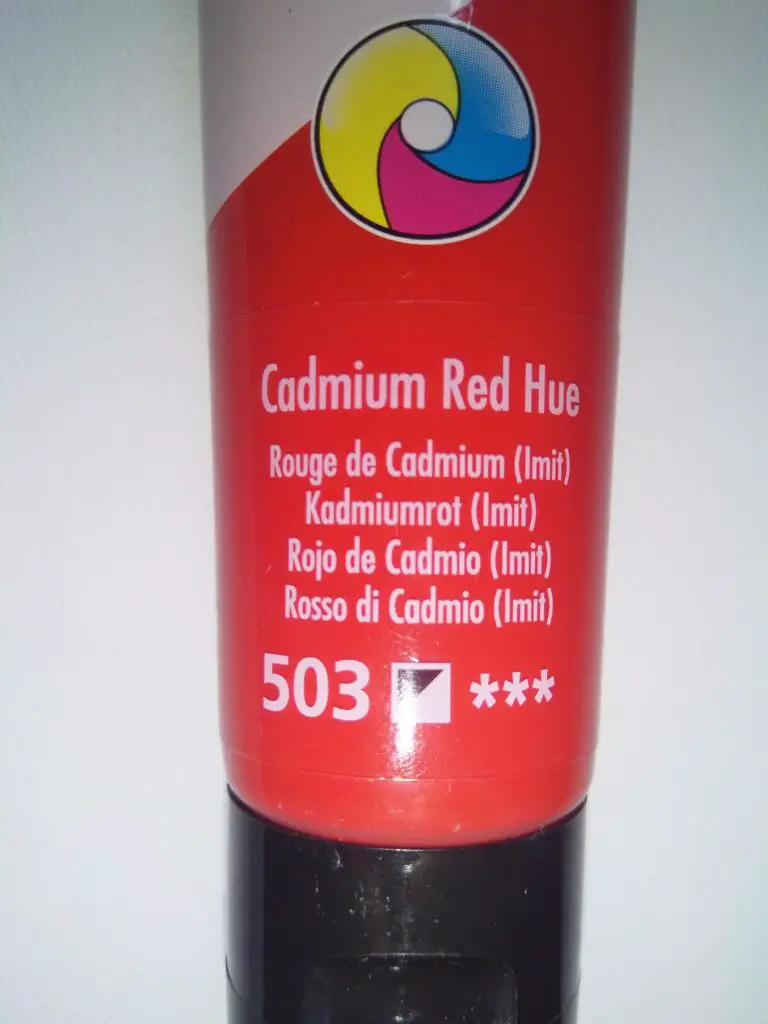
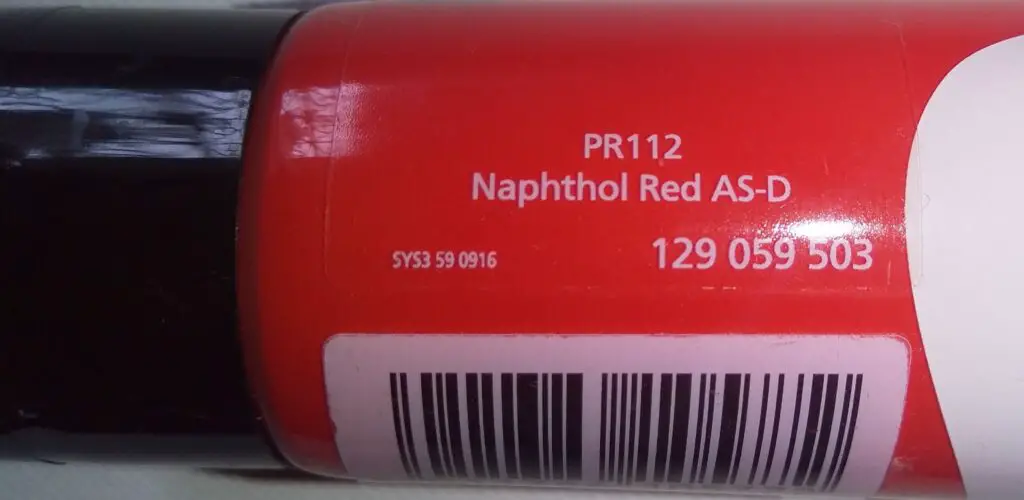
If you are more concerned about the carcinogenic elements in acrylic paint, you can opt for the colors that say ‘hue’ on the label. ‘Hue’ on a label means the particular color was made using safer and or inexpensive alternatives to the original color.
As an example, ‘cadmium red hue’ means there is no cadmium there but a safer alternative like naphthol red pigments is used instead. But the problem with hue colors is that they do not have the best quality of their original versions.
Hue colors are harder to use when color mixing, They usually give muted dull colors. Because hue colors are mostly a mixture of several pigments.
Conclusion
In conclusion, you can use acrylic paints for general artistic purposes, even though they contain a carcinogenic compound, as long as you do not, ingest acrylic paint. Acrylic paint itself is made as safe as possible for the use of artists. So I would still use my cadmium yellows, reds, and oranges, from my brush to canvas while minimizing the exposure to the body as possible.

